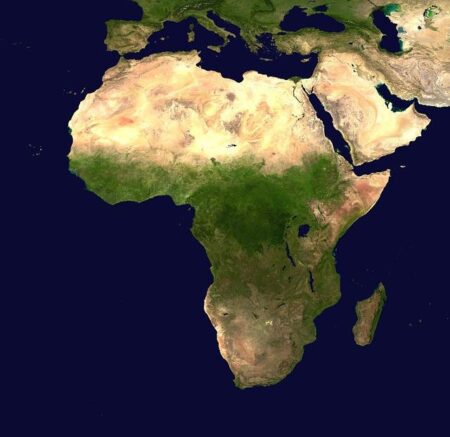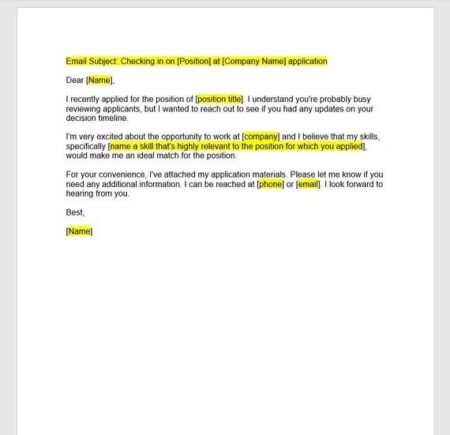Introduction
As the Greater Horn of Africa (ghoa) grapples with a profound humanitarian emergency, the intricate web of food insecurity and health crises continues to unravel, posing alarming threats to millions. Recent findings from the Public Health Situation analysis (PHSA) dated September 12, 2024, reveal a dire landscape marked by deteriorating nutritional standards, rampant disease outbreaks, and overwhelming strain on health systems. This thorough analysis sheds light on the multifaceted factors contributing to the crisis, including climate change, conflict, and economic instability, while underscoring the urgent need for coordinated international response efforts. With communities already on the brink, the report calls for immediate action to mitigate the devastating impacts of malnutrition and disease, driving home the critical need for sustained humanitarian support in this region where resilience is being tested like never before.
Impact of Climate Change on Food insecurity in the Greater Horn of Africa
Climate change is exacerbating food insecurity in the greater Horn of Africa (GHoA), presenting profound challenges to the region’s agricultural landscape. The increase in temperatures and unpredictable rainfall patterns have significantly disrupted conventional farming practices. Farmers are facing persistent droughts and sporadic floods, which not only diminish crop yields but also threaten livestock health. As an inevitable result, local communities are experiencing heightened food scarcity and economic instability, pushing millions into a precarious situation. Key consequences include:
- Declines in staple crop production, particularly maize and sorghum.
- Elevated prices for basic food items due to supply shortages.
- Increased dependency on food aid and external assistance.
The implications of these environmental changes extend beyond immediate nutritional needs; they also contribute to broader public health crises. Malnutrition rates are rising, especially among vulnerable populations such as children and women, leading to increased morbidity and mortality. The compounding stress on health systems, already fragile due to existing socio-economic challenges, is evident in the rise of food-related diseases. Moreover, the interaction between climate variability and conflict over scarce resources is deepening humanitarian crises. the interplay between climate change and food insecurity is creating a precarious cycle of health threats that necessitates urgent intervention.

Assessment of Malnutrition rates and Health Outcomes in Affected Regions
The assessment of malnutrition rates across affected regions of the Greater Horn of Africa reveals a staggering prevalence of acute malnutrition, particularly among vulnerable populations such as children and nursing mothers.Current reports indicate that over 20% of children under five years old are suffering from moderate to severe malnutrition. Environmental factors, coupled with ongoing conflict and pandemic-related disruptions, have exacerbated food insecurity, leading to a concerning rise in both stunting and wasting. Key findings suggest that interventions must focus on immediate nutritional support and long-term agricultural strategies to foster resilience in these regions.
health outcomes linked to malnutrition in the GHoA are dire,with significant increases in morbidity and mortality rates among affected populations. Health facilities in these regions are overwhelmed, with reports showing that malnutrition contributes to 50% of child deaths in the area. The interplay between inadequate nutrition and infectious diseases significantly compounds health risks, creating a vicious cycle of poor health outcomes. Comprehensive public health strategies must thus prioritize:
- Strengthening nutrition education for caregivers
- Enhancing access to healthcare services
- Improving food distribution networks
- Implementing community-based screening programs

The Role of Conflict and Displacement in Exacerbating Health Challenges
Conflict and displacement are critical factors that aggravate existing health challenges in the Greater Horn of Africa (GHoA). As violence disrupts communities, access to essential health services becomes severely restricted, leaving populations vulnerable to a myriad of health issues.Internally displaced persons (IDPs) and refugees often face catastrophic living conditions, including overcrowded shelters, inadequate sanitation, and limited food supplies, which contribute to the prevalence of communicable diseases such as cholera and malaria. Furthermore,mental health concerns surge as trauma from conflict impacts daily life,exacerbating the overall health crisis.
The health system in the GHoA is under immense strain due to these disruptions, leading to critical shortages in medical personnel and supplies. Key challenges include:
- Increased malnutrition rates among children and vulnerable populations
- Underfunded health facilities struggling to meet the rising demand
- Disruption in vaccination programs, raising the risk of outbreaks
- Challenges in managing chronic diseases, resulting from interrupted treatment
To illustrate the impact of conflict and displacement on health outcomes, the table below summarizes health-related indicators in conflict-affected regions of the GHoA:
| Health Indicator | Pre-Conflict | Post-Conflict |
|---|---|---|
| Child Malnutrition Rate (%) | 10% | 30% |
| Access to clean Water (%) | 75% | 45% |
| Immunization Coverage (%) | 90% | 60% |
| Mental Health Services Availability (%) | 50% | 15% |

strategic Interventions for Food Security and health System Strengthening
Enhancing food security and strengthening health systems in the Greater Horn of Africa are pivotal in addressing the ongoing crises. Effective strategic interventions must be prioritized to alleviate the multifaceted challenges impacting the region.Key actions include:
- Integrating agricultural Initiatives: Promoting sustainable farming practices and diversifying crops to increase resilience against climate variability.
- Improving Supply Chain Mechanisms: Establishing efficient logistical frameworks to ensure timely delivery of food and medical supplies, particularly in remote areas.
- Strengthening Community Health Services: Investing in local health infrastructure and training community health workers to deliver essential services effectively.
Collaboration among government bodies, NGOs, and local communities is crucial in implementing these interventions.Data-driven policies and ongoing monitoring will facilitate adaptive strategies that align with the evolving needs of vulnerable populations. Emphasizing the synergy between food security initiatives and health system improvements can be realized through:
- Nutrition-Sensitive Programs: Incorporating nutritional education in health campaigns to reduce malnutrition rates.
- Emergency Response Teams: Forming specialized units that can promptly address food supply emergencies and health outbreaks.
- Public-Private Partnerships: Engaging the private sector to boost investment in health and agriculture, providing innovative solutions and resources.
| Intervention Type | Description | Expected Outcome |
|---|---|---|
| Community Training | Workshops on sustainable agriculture | Increased crop yields and food variety |
| Health Outreach | Mobile clinics for underserved populations | Improved access to medical care |
| research and advancement | investing in agro-tech solutions | Enhanced resilience to climate change |

Collaboration Among Stakeholders to Combat the Public Health Crisis
Effective strategies to address the intertwined issues of food insecurity and public health crises in the Greater Horn of Africa hinge on robust collaboration among various stakeholders. This collaboration must include governments, non-governmental organizations, local communities, and international partners, each bringing unique insights and resources to the table. By fostering multidisciplinary partnerships, stakeholders can develop comprehensive action plans that address immediate health needs while also tackling the systemic issues contributing to food scarcity.Key initiatives may involve:
- Joint Health and Nutrition Programs: Integrating healthcare services with nutritional support to combat malnutrition.
- Shared Data and Resource Platforms: Establishing systems for data sharing that highlight needs and track progress across regions.
- Community Engagement: Promoting local leadership in decision-making processes to ensure culturally relevant solutions.
Additionally, an active dialogue among stakeholders can enhance adaptability in crisis response, enabling quicker mobilization of aid and resources. A recent analysis identified the following essential focus areas for collaboration:
| Focus Area | Stakeholder Role |
|---|---|
| Food Distribution Networks | NGOs and Community Organizations |
| Health Services Accessibility | government Agencies |
| Research and Monitoring | Academic Institutions |
| Funding and Resources | International Donors |

Recommendations for Policy Frameworks and Sustainable Solutions
The escalating issues of food insecurity and health crises in the Greater Horn of Africa necessitate a robust policy framework that promotes resilience and sustainable development. To effectively combat these challenges, it is crucial to implement integrated approaches that align humanitarian efforts with long-term development goals. Policymakers should consider the following strategies:
- Enhancing Agricultural Productivity: Investment in climate-resilient agricultural practices to ensure food availability.
- Strengthening Health Systems: Improving access to healthcare services and nutrition programs, particularly for vulnerable populations.
- Promoting Regional Cooperation: Encouraging collaborations between GHoA nations to share resources, information, and best practices.
- Investing in Education and Awareness: Raising community awareness about nutrition and food safety through targeted educational campaigns.
In addition to immediate relief efforts, sustainable solutions must involve a comprehensive understanding of socio-economic factors impacting food systems and health outcomes. Effective monitoring and evaluation mechanisms should be established to assess the impact of interventions. Embracing innovation will be key; so, policymakers should explore:
- Utilizing Technology: Implementation of digital platforms for market access and agricultural data management.
- Engaging Local Communities: Actively involving communities in decision-making processes related to food security and health initiatives.
- Facilitating Access to Financial Services: Providing micro-funding options to farmers and health workers.
- Enhancing Supply Chain Efficiency: streamlining logistics for food distribution to mitigate shortages.
To Wrap It Up
the food insecurity and health crisis in the Greater Horn of Africa continues to be a pressing humanitarian challenge, as detailed in the recent Public Health Situation Analysis (PHSA) released on September 12, 2024. With millions facing acute hunger and malnutrition exacerbated by conflict, climate change, and economic instability, the situation demands urgent attention and coordinated action from governments, international organizations, and local communities.As we look towards potential solutions, it is imperative that stakeholders prioritize sustainable agricultural practices, improve healthcare access, and enhance resilience against future shocks. The resilience of the region’s populations depends not only on immediate relief efforts but also on long-term strategies that address the root causes of food insecurity and health vulnerabilities. Continued vigilance and a commitment to comprehensive strategies are essential to curb this crisis and build a healthier, more secure future for the Greater Horn of Africa.







